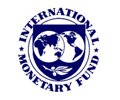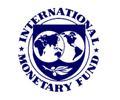
The International Monetary Fund (IMF) will forecast stable global growth and continued disinflation when it releases its updated World Economic Outlook on January 17, IMF Managing Director Kristalina Georgieva told reporters on Friday.
Georgieva said the U.S. economy is doing “a little better” than expected, despite high uncertainty surrounding President-elect Donald Trump’s administration’s trade policies that are adding to headwinds facing the global economy and pushing up long-term interest rates. higher.
With inflation edging closer to the U.S. Federal Reserve’s target, and data showing the labor market is stable, the Fed could wait for more data before making further rate cuts, he said. Overall, interest rates are expected to remain “higher for some time,” he said.
The IMF will release its global outlook update on January 17, just days before Trump takes office. Georgieva’s comments were the first indication this year of developments in the IMF’s global outlook, but she did not provide detailed projections.
In October, the IMF raised its 2024 economic growth forecast for the US, Brazil and the UK, but lowered it for China, Japan and the euro zone, citing risks of potential new trade wars, armed conflict and tight monetary policy.
At the time, they left their 2024 global growth forecast unchanged, at the 3.2% projected in July, and lowered their 2025 global growth forecast of 3.2% by a tenth of a percentage point, warning that global medium-term growth will fade. to 3.1% in five years, well below pre-pandemic trends.
“It is not surprising, given the size and role of the US economy, that there is great interest globally in the direction of the incoming administration’s policies, particularly regarding tariffs, taxes, deregulation and government efficiency,” Georgieva said.
“This uncertainty is very high in the direction of future trade policy, thereby adding to the obstacles faced by the global economy, especially for countries and regions that are more integrated in the global supply chain, medium-scale economies, (and) Asia as a region. .”
Georgieva said it was “very unusual” for this uncertainty to be reflected in higher long-term interest rates even though short-term interest rates have fallen, a trend not seen in recent history.
The IMF sees different trends in different regions, with growth expected to stall in the European Union and weaken “slightly” in India, while Brazil faces somewhat higher inflation, Georgieva said.
In China, the world’s second-largest economy after the United States, the IMF sees deflationary pressures and ongoing challenges to domestic demand, he said.
Low-income countries, despite reform efforts, are in a position where any new shock will have a “very negative” impact, he said.
Georgieva said it was worth noting that the higher interest rates needed to fight inflation did not push the global economy into recession, but the general inflation development was different, meaning central bankers needed to monitor local data closely.
A strong US dollar could potentially result in higher funding costs for developing countries and particularly low-income countries, he said.
Most countries need to cut fiscal spending after high spending during the COVID pandemic and adopt reforms to boost growth in a durable way, he said, adding that in many cases, this can be done while protecting their growth prospects.
“Countries can’t borrow their way out. They can only get out of this,” he said, noting that the world’s medium-sized growth outlook is the lowest in recent decades.
Source: Reuters




